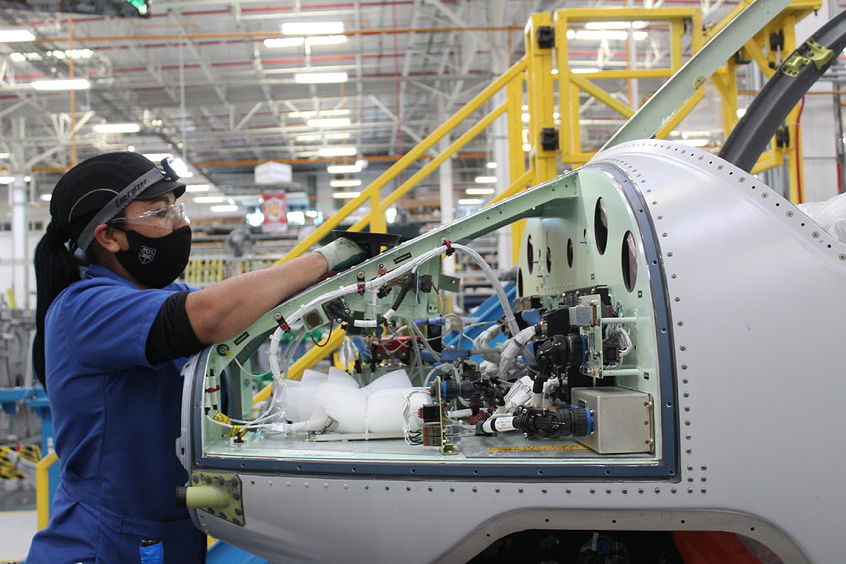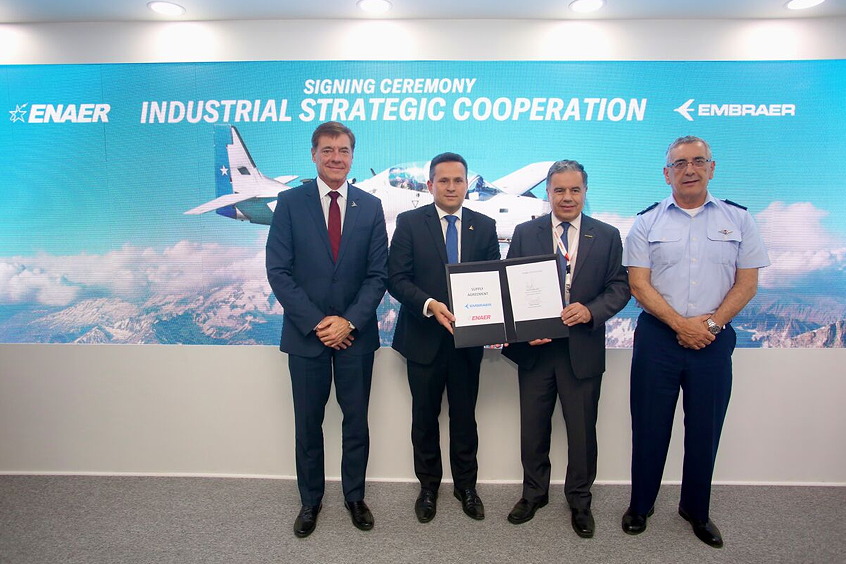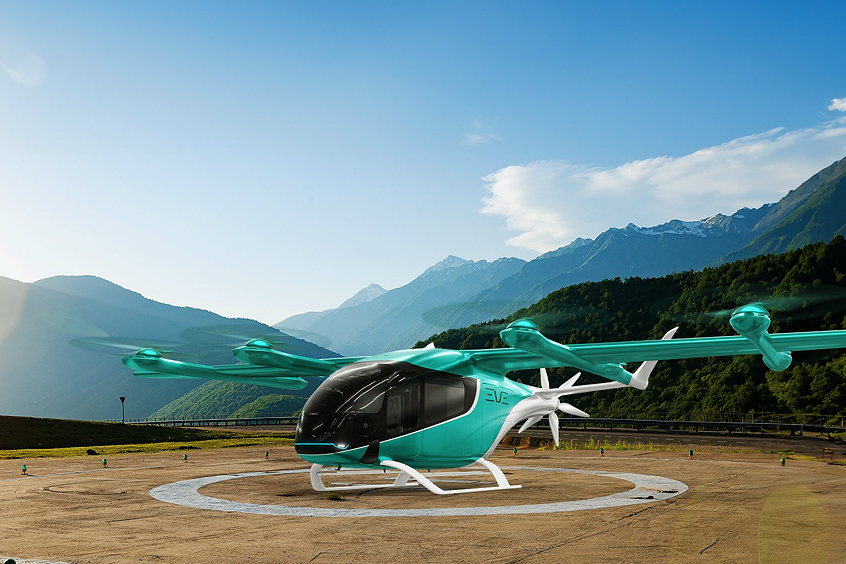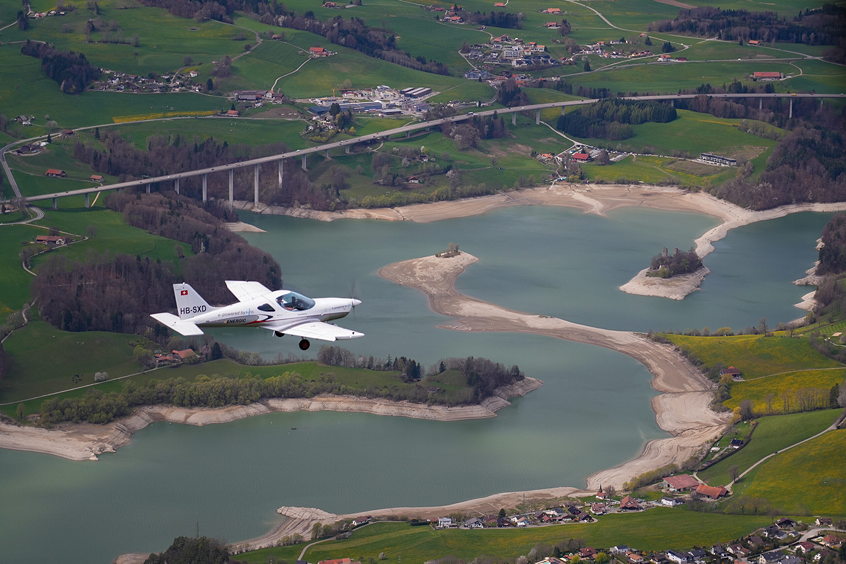Alternative fuels have the potential to support the environment- and climate-friendly developments in air transport. At present, global air traffic contributes towards almost five percent of global warming. In addition to the greenhouse gas carbon dioxide, condensation trails and the resulting cirrus clouds lead to a significant climate impact. In a three-week series of flight tests lasting until 9 October 2015, the German Aerospace Center (Deutsches Zentrum für Luft- und Raumfahrt; DLR) is investigating how to reduce the impact of air transport on the climate by using alternative fuels. A possible reduction in carbon particulate emissions – and with this a change in the properties of condensation trails – plays an important role.
ATRA and Falcon in formation flight
For these experiments, two DLR research aircraft flew at a typical cruising altitude of between nine and 12 kilometres, one behind the other in formation, in a specially restricted airspace. "Leading the formation is the twin-engined Airbus A320 Advanced Technology Research Aircraft (ATRA), which was previously fuelled with a mixture of up to 48 percent of an alternative fuel and conventional Jet A-1 fuel," says the Head of DLR Flight Operations, Oliver Brieger. "This is a medium-range passenger jet which has been converted into a test aircraft and it is an ideal representative research subject for the scientists. It uses V2500 series engines, thousands of which are in use around the world." The Falcon, which is equipped with numerous instruments, follows behind. It takes off from the DLR facility in Oberpfaffenhofen and measures the exhaust gas composition and condensation trail properties at distances ranging from 100 metres to 20 kilometres behind the ATRA. In addition, supplementary exhaust measurements are performed on the ground after each flight.
Varying fuel compositions
"During each of the measurement flights, we use an alternative fuel with varying composition," explains the director of the Emission and Climate Impact of Alternative Fuels (ECLIF) project, Patrick Le Clercq. The two ATRA V2500 engines are operated simultaneously using conventional Jet A-1 as well as various approved fully or partially synthetic alternative fuels. "In doing this, we vary the proportion of cyclic hydrocarbons over a range of between 10 and 19 percent and measure the changes in the exhaust plume," says Le Clercq, who works at the DLR Institute of Combustion Technology in Stuttgart. Cyclic hydrocarbons – otherwise known as aromatics by researchers – are largely responsible for the formation of carbon particulates during combustion in the engines. These particulates supply condensation nuclei in the aircraft exhaust gas for the formation of condensation trails under appropriate meteorological conditions. Comparative test flights with the pure conventional Jet A-1 fuel were also conducted.
Ice crystals in focus
The Falcon atmospheric research aircraft is equipped with a large number of instruments that measure the number and size of the carbon particulates as well as the quantity and shape of the resulting ice crystals. "The number, size and shape of the ice crystals determine the effects that the condensation trails have on radiation," explains Hans Schlager from the DLR Institute of Atmospheric Physics in Oberpfaffenhofen. "We want to find out how the composition of the various fuels changes the optical properties of the ice crystals created by the jet engine." The instruments on board the Falcon allows a full assessment of the emissions in the exhaust plume and of the ice crystals that are formed over the complete size range of particles. For this purpose, an additional laser-based particle detector has been used on the Falcon for the first time; it can detect individual ice particles in condensation trails and in the resulting cirrus clouds.
In the long term, findings from the current flight tests could be used to design improved aircraft fuels. "It might be possible, for example, to further develop the synthesis of fuels from renewable energy sources for aviation with respect to more climate-friendly emissions," comments Le Clercq. "To address the carbon dioxide footprint while having societal acceptance, biomass sources such as camelina, jatropha and algae are of particular interest, as these do not compete with the need to grow food."
Previous flight tests with NASA
Today, the biofuel HEFA (Hydro-processed Esters and Fatty Acids) – approved for aviation – exhibits a more favourable environment and climate compatibility when compared to conventional kerosene. This was demonstrated by the joint DLR and NASA flight tests in 2014. In this case, the DLR Falcon, together with the NASA DC-8 and Falcon, conducted test flights from Palmdale, California using HEFA. Measurements of exhaust gas plumes and condensation trails require a lot of experience, as well as specialist measuring equipment. DLR has been developing these measurement techniques in recent years. Since 2000, the DLR Falcon has been used in several measurement campaigns for the study of emissions and condensation trails behind commercial airliners.
The ECLIF project
The emissions produced by alternative fuels are being analysed in the ECLIF project using the full range of methods available at DLR – from combustion analysis in the laboratories of the DLR Institute of Combustion Technology and tests in the combustion chamber test facilities at the DLR Institute of Propulsion Technology, through to the exhaust gas measurements conducted by the DLR Institute of Atmospheric Physics now taking place during the flight trials. Scientists from NASA's Langley Research Center and the University of Oslo are taking part in the supplementary ground measurements during static tests using the A320 ATRA at the German Armed Forces Technical and Airworthiness Center for Aircraft (Wehrtechnische Dienststelle für Luftfahrzeuge und Luftfahrtgerät der Bundeswehr [Wehrtechnische Dienststelle 61]; WTD 61 ) in Manching. The WTD61 also supports DLR with the logistics for the implementation of the flight tests.
| Contact details from our directory: | |
| DLR - German Aerospace Center | Fuel Cells, Testing Services, Research/Consulting Services, Composite Design Consultants, Flight Simulators, Instrument Landing Systems, Prototyping, Airframer |
| Related directory sectors: |
| Test Services |
| Design |
Weekly news by email:
See the latest Bulletin, and sign up free‑of‑charge for future editions.

Bell Mexico delivers 800th commercial aircraft cabin

Chile's ENAER expands cooperation with Embraer

Eve names KAI as supplier for eVTOL pylons
